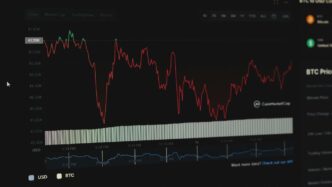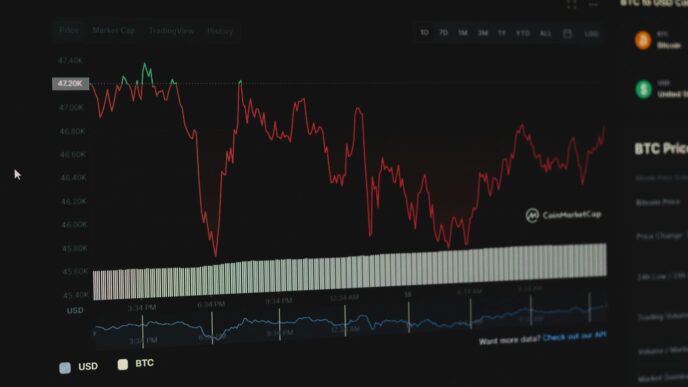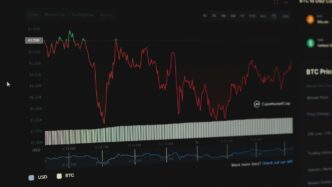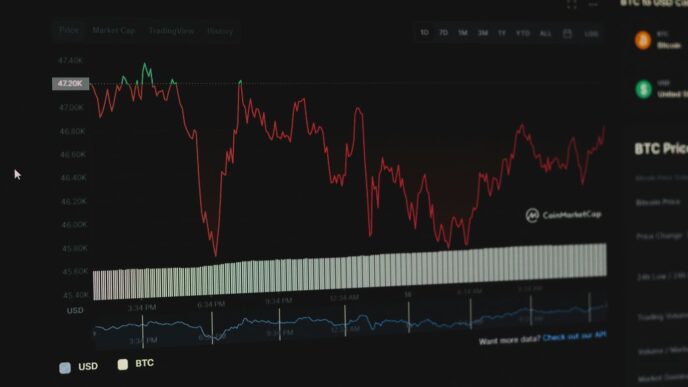Thinking about investing in government bonds but worried about inflation eating away at your returns? You’ve probably heard of Treasury Inflation-Protected Securities, or TIPS. They’re designed to help your money keep pace with rising prices. But how do they actually work, and what should you know before you buy? This article breaks down what you need to know about the 10-year TIPS yield and how these bonds fit into your investment picture.
Key Takeaways
- TIPS are U.S. Treasury bonds whose principal value adjusts with inflation, offering a way to protect your investment from rising consumer prices.
- The 10-year TIPS yield represents the real return you can expect on this specific maturity, after accounting for inflation.
- Unlike regular bonds, TIPS pay interest on an inflation-adjusted principal, meaning your interest payments can also increase with inflation.
- While TIPS protect against inflation over the long haul, they can still lose value in the short term if interest rates rise, especially if sold before maturity.
- TIPS can be purchased directly from the Treasury or through a bank or broker, making them accessible to many investors.
What Are TIPS?
So, you’ve heard about TIPS, right? They’re basically a special kind of bond issued by the U.S. Treasury. The main idea behind them is to give investors a bit of a shield against inflation. You know how sometimes prices just keep creeping up, and your money doesn’t buy as much as it used to? TIPS are designed to help with that.
Here’s the lowdown:
- Principal Adjustment: Unlike regular bonds where the face value stays the same, a TIPS’ principal amount actually changes. It goes up when inflation happens, as measured by the Consumer Price Index (CPI). So, if prices rise, the amount the government owes you also rises.
- Interest Payments: You get paid interest twice a year. The kicker is that this interest is paid on the adjusted principal. So, if your principal goes up because of inflation, your interest payments will go up too.
- Maturity Payout: When the bond matures, you get back either the original principal or the adjusted principal, whichever is higher. This means you’re guaranteed to get at least your initial investment back, even if there’s been deflation (when prices fall).
These bonds are a way to try and keep your purchasing power steady even when the cost of living goes up. They come in different maturities, usually 5, 10, or 30 years, so you can pick one that fits your timeline. They’re also backed by the U.S. government, which generally makes them a pretty safe bet in terms of not defaulting.
How TIPS Protect Against Inflation
So, you’re worried about inflation eating away at your savings? It’s a pretty common concern, and it’s exactly why the U.S. Treasury came up with Treasury Inflation-Protected Securities, or TIPS, back in 1997. Think of them as a special kind of government bond designed to keep your purchasing power intact when prices for everyday stuff start climbing.
Here’s the main idea: when inflation goes up, the principal amount of your TIPS investment also goes up. Since the interest payments are calculated based on this principal, your interest payments will also increase. This is a big difference from regular Treasury bonds, where the interest payment is fixed, no matter what happens with inflation.
Let’s break down how it works:
- Principal Adjustment: The value of your TIPS principal is tied to the Consumer Price Index (CPI), which is how the government measures inflation. If the CPI rises, your principal goes up. If it falls (that’s deflation), your principal goes down, but don’t worry, you’re guaranteed to get at least your original investment back when the bond matures.
- Interest Payments: TIPS pay a fixed interest rate, but this rate is applied to the adjusted principal. So, if your principal increases due to inflation, the dollar amount of your interest payment also increases. This means you earn more interest when inflation is higher.
- Maturity Guarantee: At the end of the bond’s term, you’ll receive either the adjusted principal or your original principal, whichever is greater. This feature is a safety net, especially if there’s been deflation.
Essentially, TIPS are built to keep pace with the rising cost of living, helping your investment maintain its real value over time. While they might offer a lower initial interest rate compared to regular bonds, that trade-off buys you a significant layer of protection against the erosive effects of inflation on your hard-earned money.
Understanding TIPS Yields
So, what exactly is a TIPS yield? It’s a bit different from what you might see with regular Treasury bonds. The yield on a TIPS is essentially a "real" yield. This means it’s the return you get after accounting for inflation. Think of it this way: if a 10-year TIPS has a yield of, say, 1.7%, that’s the extra purchasing power you’re projected to earn over and above the rate of inflation. So, if inflation ends up being 3% over those 10 years, your total nominal return would be roughly 4.7% (the 1.7% real yield plus the 3% inflation). This real yield is what protects your investment’s purchasing power.
It’s important to note that TIPS yields can sometimes be negative. This happens when the market expects inflation to be higher than the stated yield. For example, if a TIPS offers a 1% yield but inflation is running at 2%, the real yield is effectively -1%. However, even with a negative real yield, the principal value of the TIPS will still increase with inflation, potentially generating capital gains. The U.S. Treasury issues these bonds in several maturities, commonly five, 10, and 30 years, giving investors options depending on their investment horizon. You can find more details on Treasury Inflation-Protected Securities (TIPS) and their structure.
Here’s a quick look at how yields can play out:
- Positive Real Yield: You earn more than inflation. For instance, a 1.5% real yield means your purchasing power increases by 1.5% annually, regardless of inflation.
- Zero Real Yield: Your return matches inflation exactly. Your purchasing power stays the same.
- Negative Real Yield: Your return is less than inflation. Your purchasing power decreases slightly, but the principal still adjusts upwards with inflation.
When you look at TIPS yields, especially for maturities like the 10-year, you’re seeing a snapshot of what investors expect inflation to be over that period, plus a small premium for lending money to the government. These yields fluctuate based on market conditions and inflation expectations.
Positive Real Yields
So, what does a "positive real yield" actually mean when we talk about TIPS? It’s pretty straightforward, really. It means that after you factor out inflation, the money you earn from the TIPS is actually worth more than it was before. Think of it like this: if a regular bond gives you a 3% return and inflation is running at 2%, your real gain is only 1%. But with a TIPS, the "real yield" is the actual interest rate you get, and it’s already designed to be positive, meaning it should outpace inflation over time.
Right now, yields on TIPS are sitting pretty high, often at the top end of what we’ve seen over the last 15 years. This is good news for investors. It means that if you hold a TIPS until it matures, you’re pretty much guaranteed to get a return that’s higher than the rate of inflation. For example, if a five-year TIPS is offering a real yield of, say, 1.2%, and inflation averages 3% over those five years, your total annual return would be around 4.2% (1.2% + 3%). If inflation goes up, your total return goes up. If it goes down, your total return goes down, but you’re still ahead of inflation.
Here’s a quick look at some recent yields for different TIPS maturities (as of mid-September 2025):
- 2-year TIPS: Around 1.0%
- 5-year TIPS: Around 1.2%
- 10-year TIPS: Around 1.7%
These numbers are important because they represent the "real" return you can expect, separate from inflation. It’s a nice change from times when real yields might have been zero or even negative. This positive real yield offers a solid opportunity to not just keep pace with rising prices, but actually gain purchasing power over the life of the bond.
Breakeven Rates
So, you’ve got your TIPS, and you know they’re supposed to keep pace with inflation. But how do you actually figure out if they’re a better deal than regular Treasury bonds? That’s where the "breakeven rate" comes in. Think of it as a kind of hurdle rate.
Basically, the breakeven rate tells you what the average inflation rate would need to be over the life of the TIPS for it to pay off better than a regular Treasury bond with a similar maturity. If actual inflation ends up being higher than the breakeven rate, your TIPS will have outperformed. If inflation stays below that rate, you would have been better off just sticking with a standard Treasury.
Let’s look at a five-year TIPS, for example. If the breakeven rate is, say, 2.5%, that means inflation needs to average 2.5% or more over the next five years for the TIPS to beat a comparable nominal Treasury. If inflation averages less than 2.5%, the nominal Treasury would have been the more profitable choice.
Here’s a quick rundown:
- Breakeven Rate: The inflation rate needed for TIPS to outperform a traditional Treasury of the same maturity.
- Actual Inflation > Breakeven Rate: TIPS are the winner.
- Actual Inflation < Breakeven Rate: Traditional Treasury is the winner.
It’s a pretty neat way to gauge market expectations for inflation. If breakeven rates are high, the market is anticipating more inflation. If they’re low, the market expects inflation to cool down. It’s not a crystal ball, of course, but it’s a useful data point for investors trying to decide between TIPS and regular bonds.
TIPS Maturities
When you’re looking at Treasury Inflation-Protected Securities, or TIPS, one of the things you’ll notice is that they come in different lengths, or maturities. The U.S. Treasury Department currently offers TIPS with maturities of five, 10, and 30 years. This variety is pretty helpful because it lets you match your investment timeline with your financial goals.
Think about it: if you need your money back in five years, you’d probably lean towards a five-year TIPS. If you’re planning for something further down the road, like retirement in 30 years, then a 30-year TIPS might be a better fit. It’s not super complicated, but it’s a detail worth paying attention to.
Historically, TIPS were first issued with 20-year maturities, but that changed. Around 2009, the Treasury stopped issuing the 20-year ones and started offering the 30-year version instead. So, the current lineup is pretty consistent now.
Here’s a quick rundown of what’s available:
- 5-year TIPS: Good for shorter-term goals.
- 10-year TIPS: A middle-ground option.
- 30-year TIPS: Best for long-term planning.
When you buy a TIPS, you’re essentially agreeing to lend money to the government for that specific period. At the end of that term, you get your principal back, adjusted for inflation, plus the interest payments you’ve received along the way. It’s important to remember that the principal value can go up or down with inflation, but when you hold it to maturity, you’re guaranteed to get at least your original investment back. This structure is a key part of how Treasury Inflation-Protected Securities work.
Knowing these maturity options helps you make a more informed decision about which TIPS best suits your needs. It’s not just about inflation protection; it’s also about when you want that money to be available to you.
How To Buy TIPS
So, you’re thinking about adding some Treasury Inflation-Protected Securities, or TIPS, to your investment mix? Good idea, especially if you’re worried about your money losing purchasing power over time. Luckily, buying TIPS isn’t too complicated. You’ve got a couple of main routes to go.
First off, you can buy them directly from Uncle Sam himself through the U.S. Treasury’s website, TreasuryDirect. It’s pretty straightforward, though you’ll need to set up an account. The minimum you can buy is just $100, and you can add to it in $100 increments. This is a good option if you want to buy them for your IRA, but remember, you can’t use TreasuryDirect to buy them directly into an IRA. For that, you’ll need to go through the brokerage that holds your retirement account.
Alternatively, and often more conveniently, you can buy TIPS through a bank or a brokerage firm. If you already have a relationship with a financial advisor or a broker, this is probably the easiest way. They can handle the purchase for you, and it might be simpler if you’re already holding other investments with them. This route also gives you access to TIPS through mutual funds and exchange-traded funds (ETFs), which can offer diversification and easier trading.
Here’s a quick rundown of how it generally works:
- Direct Purchase (TreasuryDirect): Go to the TreasuryDirect website, create an account, and place your order. You’ll get electronic TIPS.
- Through a Broker/Bank: Contact your broker or bank. They can purchase TIPS on your behalf, either individual securities or funds that hold TIPS.
- Mutual Funds/ETFs: These are baskets of TIPS (and sometimes other inflation-linked bonds) that you can buy and sell on stock exchanges like regular stocks. This is often the most accessible way for many investors.
Keep in mind that TIPS are issued in 5, 10, or 30-year maturities, and they’re sold in electronic form only. You’ll get interest payments every six months, and the principal adjusts with inflation. When your TIPS matures, you get back at least your original principal amount, which is a nice safety net.
Pros Of TIPS
So, why would someone actually want to buy these things? Well, TIPS have a few pretty good selling points, especially if you’re worried about your money losing its buying power.
First off, the main reason people get into TIPS is their built-in inflation protection. The government adjusts the principal amount of the bond based on the Consumer Price Index (CPI). This means that as prices go up, the amount the government owes you also goes up. It’s like a built-in raise for your investment, keeping pace with the cost of living.
Another big plus is safety. Since TIPS are backed by the U.S. government, the risk of not getting your money back is pretty low. You’re not going to lose your shirt if Uncle Sam decides to default – that’s highly unlikely.
Here are some other good things to keep in mind:
- Regular Payments: You get interest payments twice a year. Since the interest rate is fixed but the principal can go up with inflation, your actual interest payment can increase over time if inflation is rising. This can be nice for steady income.
- Principal Protection at Maturity: Even if there’s a period of deflation (prices going down), you’re guaranteed to get back at least your original investment when the bond matures. You won’t get back less than you put in, which is a nice safety net.
- Tax Break: While you do pay federal taxes on the interest and any principal increases each year, TIPS are exempt from state and local income taxes. If you live somewhere with high state taxes, this can add up to some real savings.
- Diversification: TIPS can behave differently than other investments, especially when inflation is a concern. Adding them to your portfolio might help smooth out the ups and downs, particularly when other assets are struggling because prices are rising.
Cons Of TIPS
While TIPS sound pretty great for inflation protection, they aren’t perfect. There are a few downsides to keep in mind before you jump in.
First off, the interest rate on TIPS is usually lower compared to regular Treasury bonds or other fixed-income investments that don’t adjust for inflation. This is because you’re paying for that inflation protection, and it comes at a bit of a yield cost. So, if inflation stays low, you might be leaving some potential earnings on the table.
Then there’s the tax situation, which can be a bit tricky. Even though the principal value of your TIPS goes up with inflation, and you don’t actually get that extra cash until the bond matures or you sell it, you have to pay federal income tax on that increase each year. This means you could owe taxes on money you haven’t actually received yet. It’s a bit of a weird quirk that can really impact your cash flow, especially if you’re in a higher tax bracket.
Also, while TIPS are designed to protect against inflation, they don’t do much for you if prices are actually falling (deflation). In a deflationary period, the principal value of your TIPS can decrease, which means your overall return could be less than you expected, or even negative. It’s not a common occurrence, but it’s something to be aware of.
Finally, like many bonds, TIPS can sometimes be less liquid than you’d hope, especially during times of market turmoil. If everyone is trying to sell their TIPS at once, you might have a harder time selling yours at the price you want, or you might have to accept a lower price than you expected.
Best Investor For TIPS
So, who really benefits from these Treasury Inflation-Protected Securities? It’s not exactly a one-size-fits-all kind of investment, you know?
Retirees and folks getting close to retirement are often the biggest winners here. Think about it: if you’re living on a fixed income, rising prices for everyday stuff like groceries or gas can really eat into your savings. TIPS adjust with inflation, so your payments go up when prices do. It’s like a built-in buffer against losing purchasing power.
Beyond that, if you’re the type of investor who really values keeping your initial investment safe above all else, TIPS are a solid choice. Since the U.S. government backs them, the risk of not getting your money back is super low. This makes them attractive for big players like pension funds, too. They need reliable assets to meet their future promises, and TIPS fit the bill.
Long-term investors who are just plain worried about inflation chipping away at their wealth over many years might also find a place for TIPS in their portfolio. However, it’s important to see them as part of a bigger picture, not the whole show. They work best when mixed with other investments.
Here are a few groups who might find TIPS particularly useful:
- Retirees and Near-Retirees: Need to maintain purchasing power on a fixed income.
- Conservative Investors: Prioritize capital preservation over high returns.
- Long-Term Savers: Concerned about inflation eroding wealth over decades.
- Tax-Conscious Investors in High-Tax States: Benefit from state and local tax exemptions on TIPS interest, though federal taxes still apply to both interest and principal adjustments.
It’s also worth noting that while TIPS are designed for inflation protection, their performance can be a bit of a mixed bag, as we saw in 2022. They aren’t always going to outperform the stock market, but their stability can be a real plus. If you’re looking for a steady hand in your portfolio, TIPS can be a good option. You can buy them directly from the Treasury or through a broker, and they can even be held in retirement accounts.
Wrapping It Up
So, we’ve gone over what the 10-year TIPS yield is all about. It’s basically a way to get a return on your investment that stays ahead of inflation, which is pretty neat. Remember, TIPS aren’t really for getting rich quick; they’re more about keeping your money’s buying power safe over time, especially if you’re planning to hold them for the long haul. Think of them as a steady hand in your portfolio when prices are going up. It’s good to know these options exist, and understanding how they work can help you make smarter choices for your money down the road.
Frequently Asked Questions
What exactly are TIPS?
TIPS stands for Treasury Inflation-Protected Securities. Think of them as special U.S. government bonds designed to help your money keep pace with rising prices. Their value goes up when inflation goes up, and down when prices go down, but you’re always guaranteed to get at least your original investment back.
How do TIPS protect me from inflation?
When inflation rises, the amount of money the government owes you for your TIPS goes up. This means the value of your investment increases. Even the interest payments you receive will be based on this higher amount, so you get more money when prices are going up.
What is a ‘real yield’ on a TIPS?
A ‘real yield’ is the return you get on an investment after accounting for inflation. TIPS are designed to give you a positive real yield, meaning your investment should grow even after the effects of rising prices are taken out. It’s like earning a little extra on top of just keeping up with inflation.
What is a ‘breakeven rate’ for TIPS?
The breakeven rate is like a tipping point. It’s the inflation rate that would make a TIPS and a regular Treasury bond perform the same. If inflation ends up being higher than the breakeven rate, the TIPS will likely be a better investment. If it’s lower, the regular Treasury might have been a better choice.
Can TIPS lose value?
Yes, TIPS can lose value, especially if you need to sell them before they mature. Just like other bonds, their market price can go down if interest rates rise. However, if you hold them until their maturity date, you are guaranteed to get back at least the original amount you invested, or the inflation-adjusted amount, whichever is greater.
Who should consider investing in TIPS?
TIPS are a good choice for people who are worried about inflation eroding the value of their savings, especially retirees or those nearing retirement. They are also suitable for conservative investors who want to protect their principal and for long-term investors who want to ensure their money keeps its buying power over many years.














